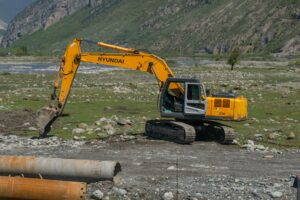Executive Summary. Paramount to cost control is a superintendent’s and project manager’s ability to know cost in real time. Knowing the daily cost of an operation and how to run “what-if” scenarios can protect a budget. Below are some basics to draw upon.
What makes a construction budget? A construction budget is made of up a handful of cost types; however, the most important cost types in production analysis work are labor and equipment. And each of these resources on a crew have a dollar value per hour. Adding up the cost per hour for each person and each piece of equipment results in the daily cost. The daily cost divided by the quantity earned in a day gives you the daily unit cost.
Budgeted (or estimated) cost versus actual cost. There is a large difference between the definition of budgeted cost and actual cost. The estimator, prior to winning the job, will estimate the crew make-up, the production of the crew, resulting in the total cost of a particular task. This is called the estimate. The actual cost is what it actually takes to do in the field.
Give me an example – start with the budget. For example, if we have 1,000 LF (lineal feet) of 18” pipe to put in the ground, the estimator may have calculated a production rate of 100 LF/WD (lineal feet per work day) with a crew that costs $5,600/work day. That is a unit cost of $56.00/LF.
Now show me the what-if. Well, when the superintendent gets to the job, (s)he may say “what if I can get more footage with an additional person on the crew”….or “what if I can get more footage in a day with an additional person on the crew and a bigger excavator than the estimate shows…” These two what-if scenarios are shown on the next page.

How do I know which what-if to use? If you look at the spreadsheet on the next page, there are two what-if scenarios run: a 6-man crew and a 6-man crew with a larger excavator. If you look to the far right, the budget gain or loss is shown. That ought to be a good indicator.
How do I do this in real life without a fancy spreadsheet? The table of data you see at your left looks complicated and like something a superintendent usually can’t, or doesn’t want to, do. Everything in this spreadsheet can be done with a pen, a $5 Casio calculator, and a legal pad. Get your estimator or project manager to get the average $/manhour for your crew folks, plus the $/hour for each of the pieces of equipment. And using 8 hours/day for your work day and picking a production rate, the math gets pretty easy. It may look intimidating at first, but once you do it you’ll feel empowered and in control of your job. You’ll also be able to calculate real time costs on your job.
My story. They make software to do this function or you can create this spreadsheet yourself. Like anything new, you have to put in the time to learn this new procedure and you have to keep doing it – you have to make it a habit. I’ve done this a lot on just production rates (no dollars, just MH/LF). I would walk out in field, count the guys, and see how much footage they had by lunch: 5 guys working from 7am to 12pm is 25 manhours. And they got 100 LF in the ground by lunch: 25 MH / 100 LF = 0.25 MH/LF. When I look in the estimate if we have the pipe going in at 0.20 MH/LF, we’re in trouble. If we estimated it at 0.35 MH/LF, we’re beating budget! The point here is that this can be a back of the napkin calculation on production like I just showed you, and once you figure the cost of your crew is, say, $7,000/day, you can easily do a back of the napkin unit cost in seconds from your pickup truck. Work safe!







0 Comments